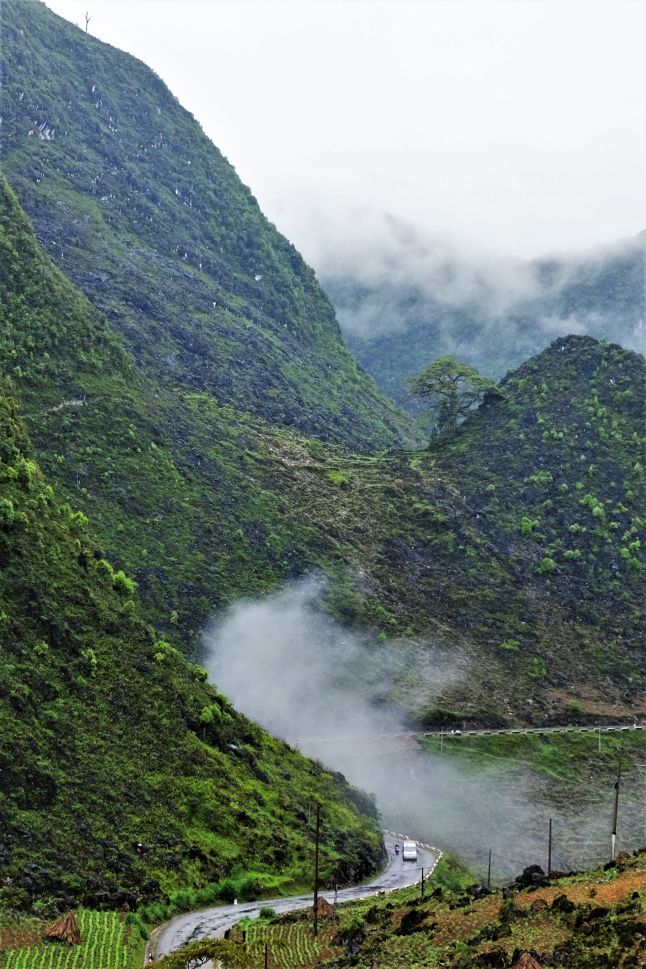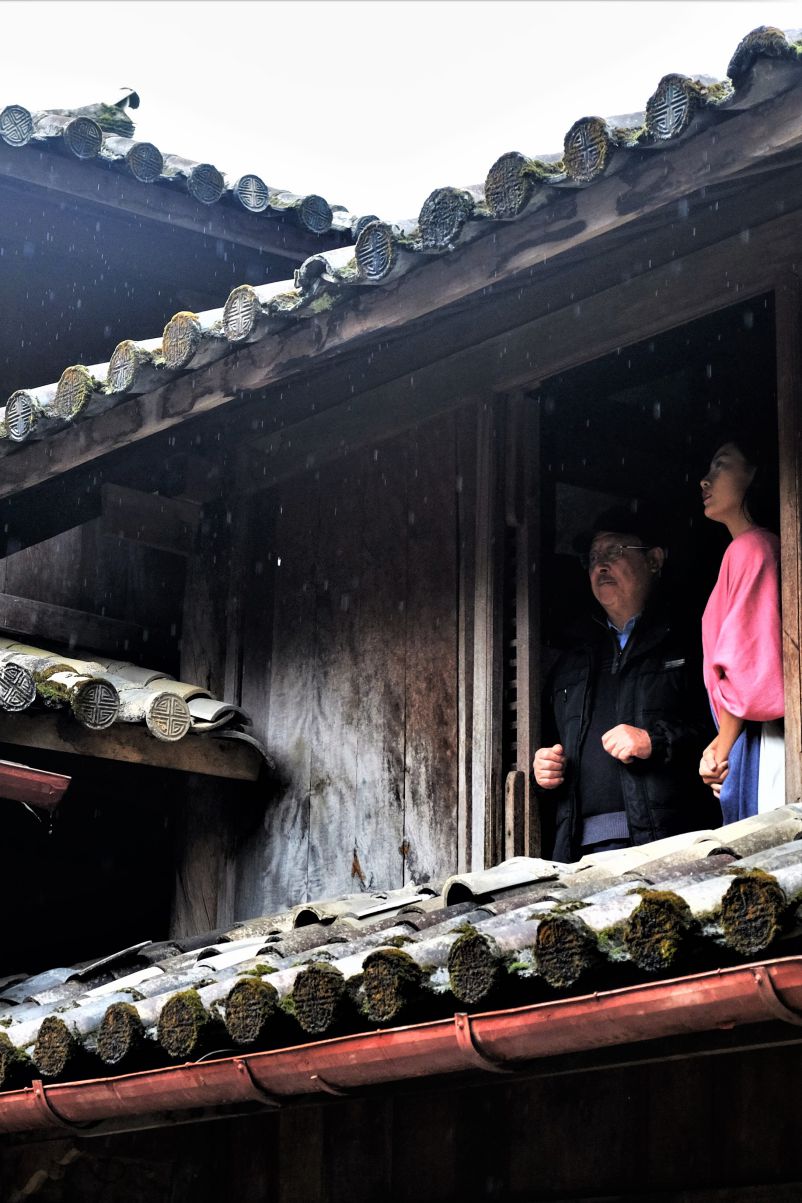From November, Dong Van enters winter with the typical cold of the highlands. The temperature drops to about 5 - 15 degrees Celsius, sometimes below 0 degrees Celsius with thick fog. Winter comes, making the entire rocky plateau covered in frost, covering the gloomy, quiet, gray color of the mountain rocks, of the cat ear rocks, of the tiled roofs of the H'Mong houses.
Ha Giang Loop Route
Ha Giang loop is a popular name among young people who love backpacking, originating from the hashtag #hagiangloop that has been spreading on social networks in recent years. Ha Giang loop is understood as the "Ha Giang loop" route with narrow, winding sections precariously located between mountains.
The long, narrow road passes through four districts of the Dong Van stone plateau of Ha Giang province, namely Quan Ba, Yen Minh, Dong Van and Meo Vac. Many international newspapers and the backpacking community consider this a road in the Top “must-go-once-in-a-lifetime” destinations.
Like many other young people, I also have the desire to explore this 350km long winding road through mountain valleys, high passes, and deep ravines to admire the spectacular beauty of the Dong Van stone plateau. The first times I came to Ha Giang, I went in late spring when the weather had warmed up and the trees were green again. It was only recently that I had the chance to return to the land at the head of the Fatherland in the cold wind season with a group of colleagues.
Mist covered the passes and bends from early morning, the cold seeped into every fiber of the skin but still did not stop anyone from exploring. Take a sip of coffee to warm up, take a deep breath of this peaceful air and then hit the road.
The Ha Giang adventure trip fascinated us and we passed through so many majestic natural scenes beyond imagination. The journey was long but it never made the wandering souls tired because the beautiful scenes appeared one after another. From the twin mountains, Quan Ba Heaven Gate, Yen Minh pine forest, the rammed earth houses of the H'Mong people in Dong Van, the sacred Lung Cu flagpole, Tham Ma slope... to the legendary Ma Pi Leng pass where you can look out over the smooth green strip of the Nho Que River.
The beautiful scenery is an unforgettable part of the trip, but the feeling of riding a motorbike through the long, winding slopes is the most interesting thing that the Ha Giang loop leaves behind.
The route can be traveled leisurely in 4-5 days, some tourists even try their hand at conquering it by motorbike in just 3 days. But if you rush, you won’t be able to remember anything, if I had time to stay, I would roam these roads for a whole week and still not get bored.

Hmong houses on the rocks
There were many things that left a deep impression on me during the trip, from the countless poetic landscapes, the terrifyingly steep mountain passes, to the friendly children with innocent smiles. But what I remember most are the ancient houses of the rocky region such as the King Meo’s palace and Pao’s house.
The Meo King Palace is a solid structure over 120 years old located in Sa Phin valley, Dong Van district, which welcomes visitors every year without stopping. That time, we were lucky to have the opportunity to visit the Vuong Palace to meet Mr. Vuong Duy Bao (grandson of the "Meo King" Vuong Chi Sinh) and listen to the truth and fiction about the most powerful king in the border region. The stories became longer and longer, making viewers feel as if they were lost in a faraway land, and even when stepping into the big house, that feeling still lingered.
Arriving when there were few people, I had time to walk around and contemplate each carving on the house's pillars, stone pedestals, iron-framed doors, the elaborate yin-yang tiled roof... thinking about the once-luxurious appearance now covered with moss by time. Walking back along the tall cypress trees, I felt like I had just left the ancient citadel and returned to reality.

The feeling of the transformation of the rocky plateau prevailed when I returned to the place called “Pao’s house” (the setting of the movie Pao’s Story). A few years ago, I briefly visited the house on my way to work, but I still remember clearly that it was March, the weather was sunny and the two rows of pear trees leading to Lung Cam were blooming. Now the stone fence is still there, the rammed earth houses are still there, the pear trees, the sa moc trees and the buckwheat fields in full bloom are still there, but the rustic, peaceful features are no longer there. Surprisingly, the four-generation family of the homeowner still lives in the house as usual, even though they now receive hundreds of visitors.
In both hot and cold seasons, buckwheat and yellow mustard plants are grown continuously at the foot of the silver-gray mountains. The gate of the house sells all kinds of fresh and dried specialties. Visitors flock to take pictures, but I'm sure few have seen "Pao's Story".











